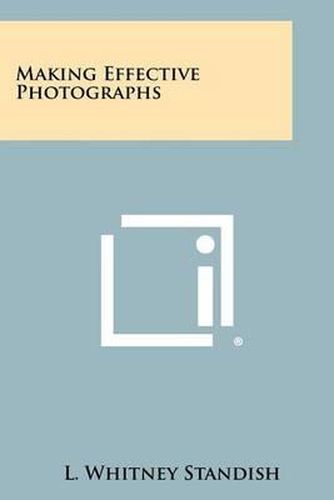Readings Newsletter
Become a Readings Member to make your shopping experience even easier.
Sign in or sign up for free!
You’re not far away from qualifying for FREE standard shipping within Australia
You’ve qualified for FREE standard shipping within Australia
The cart is loading…






This historic book may have numerous typos and missing text. Purchasers can download a free scanned copy of the original book (without typos) from the publisher. Not indexed. Not illustrated. 1949 Excerpt: …as far as organization is concerned, are line and form. All design is composed of lines and forms. The lines are the framework; the forms are the substance. Without lines the forms cannot exist–so line comes first. Line may be defined as any edge or area of light or dark that causes the eye to move over the picture space. Definitions usually do not count for much, and any pictorialist trying for the first time to comprehend just what is meant by line from the above definition will probably be confused. Or it may seem too simple, which would be just as bad for line is not simple. Those who have a fine feeling for line know just how elusive it can be. A better way to explain line is to show graphically the linear arrangement of a picture. I have diagrammed in Figure 48 the important lines of New England House by Barbara Standish (Figure 47). Now it will be seen at once that Figure 48 is not a complete picture. There are no values, no gradations and consequently no form, but still the general arrangement of line in the diagram is most pleasing to the eye and there is in the picture a feeling of linear harmony. With a little study it will be noticed that the main lines in the picture tend to form a sort of pattern of their own. To make this more readily apparent, I have made a smaller diagram in the upper left corner of Figure 48 showing an idealized form of the same line arrangement. Now it will be seen that we have a radiating design. The major lines form a sort of pinwheel effect leading from the center of interest–the house, to the edge of the picture area. However, so that they will not fly off into space, the edge in each case has been slightly darkened and protected. Now look at the picture again (Figure 47). How many times if y…
$9.00 standard shipping within Australia
FREE standard shipping within Australia for orders over $100.00
Express & International shipping calculated at checkout
This historic book may have numerous typos and missing text. Purchasers can download a free scanned copy of the original book (without typos) from the publisher. Not indexed. Not illustrated. 1949 Excerpt: …as far as organization is concerned, are line and form. All design is composed of lines and forms. The lines are the framework; the forms are the substance. Without lines the forms cannot exist–so line comes first. Line may be defined as any edge or area of light or dark that causes the eye to move over the picture space. Definitions usually do not count for much, and any pictorialist trying for the first time to comprehend just what is meant by line from the above definition will probably be confused. Or it may seem too simple, which would be just as bad for line is not simple. Those who have a fine feeling for line know just how elusive it can be. A better way to explain line is to show graphically the linear arrangement of a picture. I have diagrammed in Figure 48 the important lines of New England House by Barbara Standish (Figure 47). Now it will be seen at once that Figure 48 is not a complete picture. There are no values, no gradations and consequently no form, but still the general arrangement of line in the diagram is most pleasing to the eye and there is in the picture a feeling of linear harmony. With a little study it will be noticed that the main lines in the picture tend to form a sort of pattern of their own. To make this more readily apparent, I have made a smaller diagram in the upper left corner of Figure 48 showing an idealized form of the same line arrangement. Now it will be seen that we have a radiating design. The major lines form a sort of pinwheel effect leading from the center of interest–the house, to the edge of the picture area. However, so that they will not fly off into space, the edge in each case has been slightly darkened and protected. Now look at the picture again (Figure 47). How many times if y…